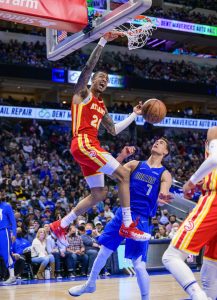After posting the NBA’s best record (52-20) in 2020/21, the Jazz entered the ’21/22 season with championship aspirations and came out of the gate strong, winning 28 of their first 38 games.
In the second half of the season, however, injuries, inconsistently, and a frequently recurring inability to hold fourth-quarter leads plagued the Jazz, who went just 21-23 after their impressive start and failed to hit their stride in the postseason, falling in six games to Dallas in the first round.
It was a familiar script for Utah. The team has finished at least 14 games above .500 for six consecutive seasons but never won more than a single playoff series in any one of those years. The latest postseason exit will lead to more scrutiny than ever for the Jazz’s core, particularly since longtime head coach Quin Snyder stepped down from his role several weeks after the season ended, citing a desire to move on.
While the Jazz may be focused on their head coaching search for the time being, it’s safe to assume they’re also thinking long and hard about the extent to which the roster needs to be overhauled. It will be fascinating to see just how aggressive CEO Danny Ainge and general manager Justin Zanik decide to be this offseason.
The Jazz’s Offseason Plan:
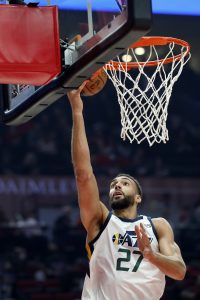 Dating back at least to the time they both contracted COVID-19 in March 2020, there have been reports of tension between Jazz All-Stars Donovan Mitchell and Rudy Gobert. Although Mitchell and Gobert have repeatedly insisted publicly that there are no issues beyond occasional moments of ordinary on-court frustration, those whispers have persisted, leading to speculation that Utah will eventually break up the star duo.
Dating back at least to the time they both contracted COVID-19 in March 2020, there have been reports of tension between Jazz All-Stars Donovan Mitchell and Rudy Gobert. Although Mitchell and Gobert have repeatedly insisted publicly that there are no issues beyond occasional moments of ordinary on-court frustration, those whispers have persisted, leading to speculation that Utah will eventually break up the star duo.
Multiple reports so far this offseason have suggested the Jazz are shutting down inquiries on Mitchell, but appear more open to the idea of moving Gobert. If that’s true, it makes some sense. As terrific a rim protector as Gobert is – and he’s currently the NBA’s best – his impact on offense is limited and his game-changing defensive ability can be negated to some extent when Utah faces a five-out look.
The Jazz can live with those limitations, but doing so would be easier if Gobert wasn’t set to earn nearly $170MM over the next four years. The club would likely prefer to build a more flexible defense made up of several versatile, switchable players. Having a perennial Defensive Player of the Year candidate at the rim to back up those players would be ideal, but Gobert’s massive contract complicates the front office’s ability to acquire them — using him as a trade chip may be the best solution to diversify the roster.
Finding a suitable trade for Gobert won’t be easy. Other teams will be wary of his outsized cap hit and the things he can’t do on the court, so it may not be realistic for the Jazz to expect a massive return, especially since they’ll want players who can make an immediate impact, rather than prospects and draft picks. Teams with interest in trading for Gobert won’t be looking to give up multiple impact two-way players for him.
As they consider potential deals this offseason, the Jazz’s front office will likely have the Raptors on speed dial. Toronto has a hole at center and has several talented two-way wings and forwards on its roster, including Pascal Siakam, Scottie Barnes, OG Anunoby, and Gary Trent Jr. — the Raptors won’t necessarily be willing to discuss all of those players (Barnes, certainly, isn’t going anywhere), but their abundance of starting-caliber forwards makes them an intriguing potential trade partner from Utah’s perspective.
Chicago has also been cited as a possible suitor for Gobert, but any deal between the Jazz and Bulls may hinge on how the two teams view former No. 4 overall pick Patrick Williams. The Bulls would have to be more willing to give him up than they were at the 2022 trade deadline, and the Jazz would have to like him enough to make him the centerpiece of a package for Gobert. I’m skeptical of the latter in particular.
The Jazz aren’t lacking in alternative trade candidates if they don’t find a Gobert deal they like. Mike Conley, Bojan Bogdanovic, Jordan Clarkson, Royce O’Neale, and Rudy Gay, among others, should all be available if the price is right.
Still, Utah will have to keep its expectations in check for what those veterans could realistically return — they’re solid rotation players and their contracts are reasonable enough, but they’re not major trade assets. None of them is going to be bring back two or three above-average rotation players like Gobert theoretically could. Any deals involving guys from this group would be more about swapping one veteran for another, creating a different look to the roster.
Of course, no Jazz player would warrant a more significant haul on the trade market than Mitchell, but it appears the organization won’t consider going down that path unless the former Louisville star says he wants out. There has been no indication that will happen this summer.
The Jazz’s ability to sweeten trade offers with draft picks will be limited. They have no selections in this year’s draft and have also traded away their 2024 first-rounder (top-10 protected). They could still trade up to two future first-rounders between 2026-29 as long as that ’24 pick doesn’t fall within its protected range for multiple years, but not every team will be swayed by draft assets so far down the road.
While most of Utah’s rotation players are under contract for 2022/23, some minimum-salary contributors will be free agents, including Hassan Whiteside, Danuel House, and Eric Paschall. If the Jazz can get them back at the minimum or something very close to it, it would make sense to do so, but the team already projects to be in the tax and will be reluctant to invest more heavily than that in players who are essentially eighth or ninth men. If Whiteside, House, or Paschall get offered substantial raises elsewhere, Utah will likely replace them with minimum-salary free agents.
Finally, it’s worth mentioning that the ongoing head coaching search represents one of the Jazz’s most important decisions of the offseason. Snyder was among the NBA’s longest-tenured coaches and was respected by his players. With the franchise at a crossroads, finding a Snyder replacement who is capable of coming in and demanding respect while creating stability would go a long way toward making sure the team doesn’t have to fully tear down its roster and start over within the next few years.
Salary Cap Situation
Note: Our salary cap figures are based on the league’s latest projection ($122MM) for 2022/23.
Guaranteed Salary
- Rudy Gobert ($38,172,414)
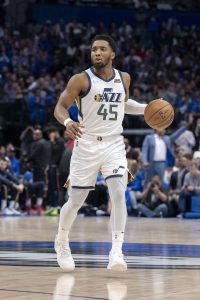 Donovan Mitchell ($30,351,780)
Donovan Mitchell ($30,351,780)- Mike Conley ($22,680,000)
- Bojan Bogdanovic ($19,550,000)
- Jordan Clarkson ($13,340,000)
- Royce O’Neale ($9,200,000)
- Rudy Gay ($6,184,500)
- Nickeil Alexander-Walker ($5,009,633)
- Udoka Azubuike ($2,174,880)
- Jared Butler ($1,563,518)
- Xavier Sneed (two-way)
- Total: $148,226,725
Player Options
- None
Team Options
- None
Non-Guaranteed Salary
- Juan Hernangomez ($7,307,130) 1
- Total: $7,307,130
Restricted Free Agents
- Eric Paschall ($2,228,276 qualifying offer / $2,228,276 cap hold): Bird rights
- Trent Forrest ($2,011,516 qualifying offer / $2,011,516 cap hold): Early Bird rights
- Total (cap holds): $4,239,792
Two-Way Free Agents
- None
Draft Picks
- None
Extension-Eligible Players
Note: These are players who are either already eligible for an extension or will become eligible before the 2022/23 season begins.
- Nickeil Alexander-Walker (rookie scale)
- Bojan Bogdanovic (veteran)
- Jordan Clarkson (veteran)
- Juan Hernangomez (veteran)
Unrestricted Free Agents / Other Cap Holds
- Danuel House ($1,811,516 cap hold): Non-Bird rights
- Hassan Whiteside ($1,811,516 cap hold): Non-Bird rights
- Total: $3,623,032
Offseason Cap Outlook
With over $148MM in guaranteed money committed to 10 players, the Jazz are on track to go well beyond the projected luxury tax line of $149MM. It’s possible they could avoid becoming a taxpayer if they make a cost-cutting trade or two, but there’s no realistic scenario in which they open up cap room. For now, we’re counting on them being limited to the taxpayer mid-level exception.
Cap Exceptions Available
- Taxpayer mid-level exception: $6,392,000 2
- Trade exception: $9,774,884
- Trade exception: $1,517,981
- Trade exception: $799,106
- Trade exception: $567,564
Footnotes
- Hernangomez’s salary will become fully guaranteed after June 30.
- This is a projected value. The Jazz could instead have access to the full mid-level exception ($10,349,000) and bi-annual exception ($4,050,000) if they remain below the tax apron.
Salary and cap information from Basketball Insiders and RealGM was used in the creation of this post.
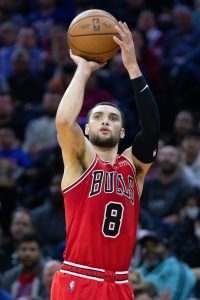 Chicago was still the East’s top seed as late as February 25, but injuries ultimately caught up to the team. Caruso and Ball only played 41 and 35 games, respectively, while starting power forward
Chicago was still the East’s top seed as late as February 25, but injuries ultimately caught up to the team. Caruso and Ball only played 41 and 35 games, respectively, while starting power forward 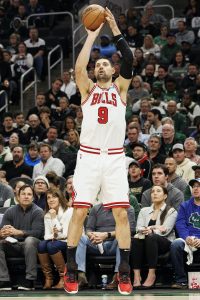
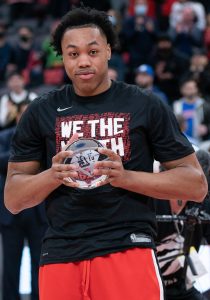 The rapid emergence of eventual Rookie of the Year
The rapid emergence of eventual Rookie of the Year 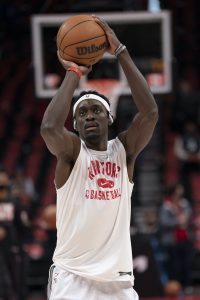
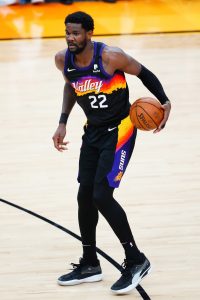 Here are a couple specific examples to help make things a little clearer:
Here are a couple specific examples to help make things a little clearer: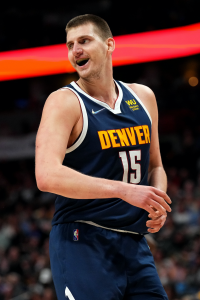 Given the absences of those two key players, it should have been a lost season for the Nuggets, but Jokic was so good that you got the sense the team still had a chance to make some noise in the playoffs if Murray and Porter could make it back.
Given the absences of those two key players, it should have been a lost season for the Nuggets, but Jokic was so good that you got the sense the team still had a chance to make some noise in the playoffs if Murray and Porter could make it back.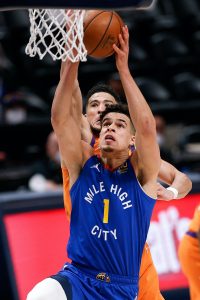
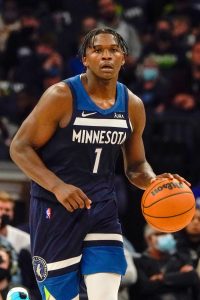 The last time the Wolves won as many as 46 games and made the playoffs, in 2018, the team came apart shortly thereafter, trading away star wing
The last time the Wolves won as many as 46 games and made the playoffs, in 2018, the team came apart shortly thereafter, trading away star wing 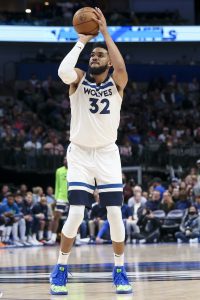
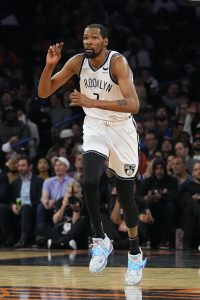 Harden dealt with conditioning and hamstring issues, and reportedly became frustrated by Irving’s inconsistent availability and the Nets’ struggles in Durant’s absence, ultimately requesting a trade prior to February’s deadline. Health problems also impacted
Harden dealt with conditioning and hamstring issues, and reportedly became frustrated by Irving’s inconsistent availability and the Nets’ struggles in Durant’s absence, ultimately requesting a trade prior to February’s deadline. Health problems also impacted 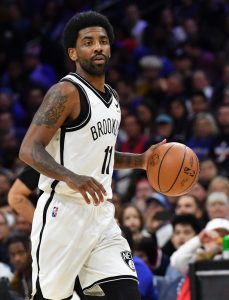
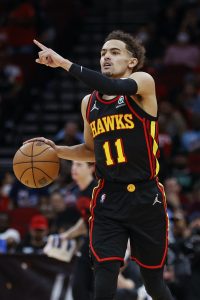 Unfortunately for the Hawks, the Eastern Conference was far more competitive in 2022 than it was a year earlier, and even after winning a pair of play-in games, they ran into a less favorable first-round playoff matchup this time around. The Heat’s defense forced
Unfortunately for the Hawks, the Eastern Conference was far more competitive in 2022 than it was a year earlier, and even after winning a pair of play-in games, they ran into a less favorable first-round playoff matchup this time around. The Heat’s defense forced 